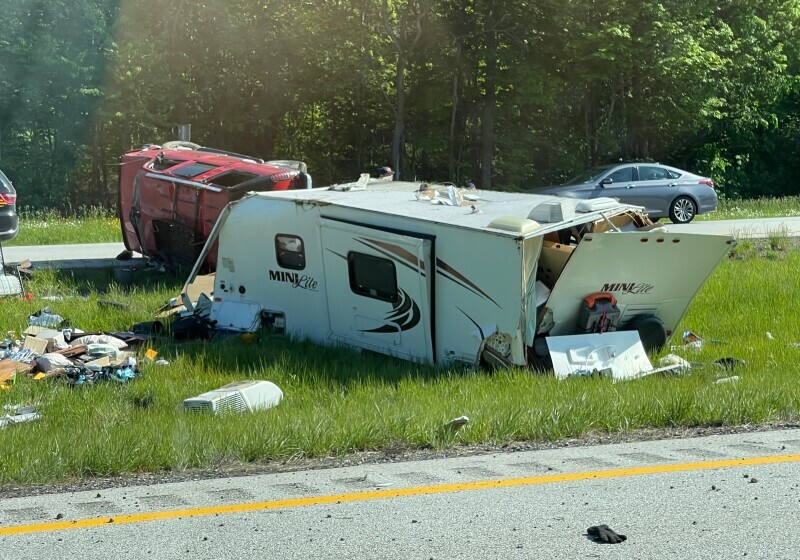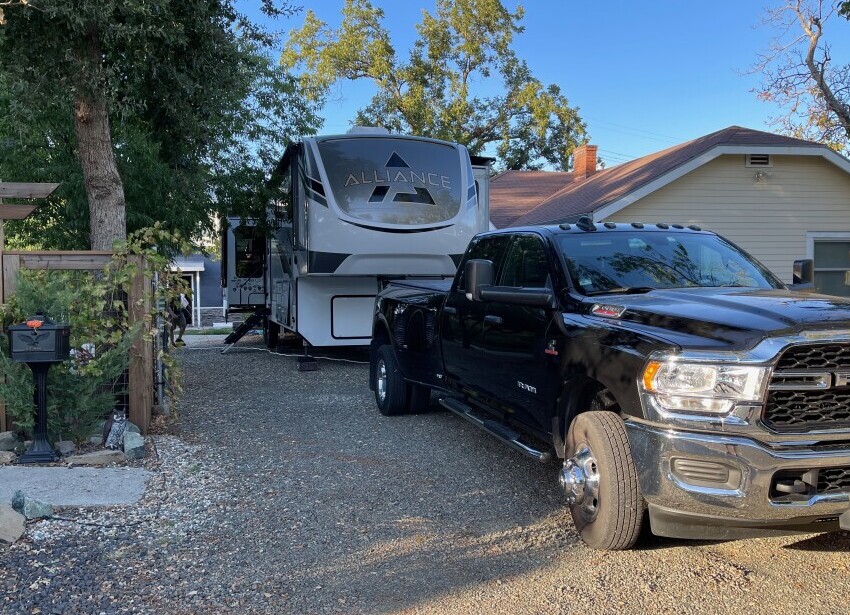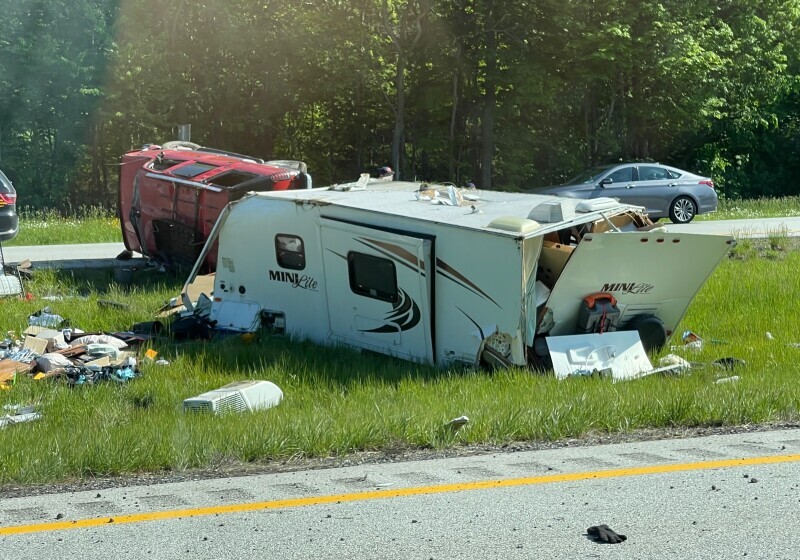RVing is more than just a mode of travel—it’s a gateway to freedom. Picture this: open roads, changing landscapes, and the joy of discovering new places without the restrictions of hotels and tight schedules. Whether you’re a weekend warrior or a full-time RVer, the adventure is yours to shape.
But while the road ahead is filled with promise, it’s also strewn with potential hiccups. A smooth journey hinges on sidestepping common mistakes that can trip up even the most seasoned travelers. Understanding these pitfalls can transform your RV experience from headache-inducing to blissful travel bliss.
What is the most common mistake new RVers make, and how can it be avoided?
One of the most common mistakes new RVers make is overpacking. While it’s tempting to bring all the comforts of home, every additional item adds weight, which can negatively impact your RV’s fuel efficiency and handling. To avoid this, focus on packing only the essentials and periodically reassess what you truly need on the road. This not only makes travel safer but also enhances your overall RV experience.
Table of Contents
- What is the most common mistake new RVers make, and how can it be avoided?
- Mastering the Road: Avoiding Driving Mistakes
- Setup and Departure: Common Errors to Dodge
- Smart Buying and Packing: Sidestepping Costly Errors
- Safety and Maintenance First: Addressing Oversights
This post contains affiliate links.
Navigating this world involves more than just steering a large vehicle—it’s about preparation, awareness, and making smart decisions. Embracing the nomadic lifestyle means being ready for the unexpected and ensuring your rig, and your plans, are up to the task.
Having the right mindset sets the stage for unforgettable adventures. From securing a site at your favorite national park to discovering hidden gems off the beaten path, RVing offers endless possibilities when you’re prepared, mindful, and ready to tackle challenges head-on.

Mastering the Road: Avoiding Driving Mistakes
Navigating an RV can be a daunting task, especially for those accustomed to driving smaller vehicles. The size and weight differences require a whole new approach to everything from braking to turning.
When it comes to driving an RV confidently, learning from professionals can make all the difference. Consider investing in a driving class. These courses are designed to teach key skills like handling tight turns, parking in smaller spaces, and dealing with unique road challenges.
Understanding your RV’s dimensions is crucial. Knowing the height of your rig is essential to avoid low-clearance hazards like bridges, overpasses, or even some drive-throughs. A quick lesson in spatial awareness can save you from costly damages or embarrassing mishaps.
Take the time to practice in a safe area before setting out on long trips. Familiarize yourself with your vehicle’s handling, braking, and acceleration. Each RV is unique, and getting to know its quirks can make your journey much smoother and safer. One time we were going to be “moochdocking” in our son’s driveway. It was on a busy street and the entrance was 17′ wide. Fortunately the place we left that morning had room to practice that backing challenge. We set out cones and practiced backing into a 17′ wide spot three times. When we got to our son’s place the practice paid off and we were able to back in without issue.

Setup and Departure: Common Errors to Dodge
The excitement of hitting the road can sometimes lead to skipped steps in the setup and departure process. One of the first things to ensure is that your RV is properly leveled. A stable, leveled rig isn’t just about comfort; it affects appliance efficiency and the structural integrity of your home on wheels.
A setup and pre-trip checklist isn’t just for beginners. Even seasoned RVers swear by them to ensure nothing gets left behind, from securing loose items to checking tire pressures and fluid levels. Such lists are lifesavers when it comes to preventing minor issues from becoming costly problems down the road.
Staying organized on travel days can be challenging, especially if you’re eager to get moving. To avoid leaving important items behind, consider using a dedicated packing list for each trip. It helps keep track of everything you need, from clothing and gadgets to food and cleaning supplies.
Lastly, when you’re ready to depart, make a habit of checking your surroundings for anything left behind. Sometimes the excitement of moving on to the next destination can mean forgotten lawn chairs or BBQ grilles left at the campsite. A quick walkthrough can save you heartache later.
Smart Buying and Packing: Sidestepping Costly Errors
Choosing the right RV may seem daunting. It’s crucial to pick one that matches both your lifestyle and travel dreams. Are you planning months on the road or just weekend getaways? Assess your needs thoroughly to avoid regretting a purchase that doesn’t fit your journey.
Packing is another area where mistakes can sneak up on you. Overpacking can easily lead to exceeding weight limits, which isn’t just a fuel guzzler but can also strain your RV’s mechanics. Prioritize essentials, and find a balance in what you bring along to leave space for spontaneous road-trip treasures.
With your travel itinerary, it’s tempting to cram in too many sites and stops. Yet, overambitious schedules can lead to stress rather than enjoyment. It’s key to pace yourself, allowing for some downtime to soak in the beauty around you, rather than constantly rushing from one location to another.
Making campground reservations, especially during peak seasons, is smart planning. Many places fill up quickly, and arriving with no spot can throw a wrench in your plans. Look ahead and book where possible, giving you peace of mind and more time to enjoy the journey.

Safety and Maintenance First: Addressing Oversights
Keeping your RV in top shape means prioritizing regular maintenance. This isn’t just about keeping things running smoothly but also preventing larger issues. Routine checks on things like your brakes, tires, and fluid levels can go a long way in avoiding breakdowns or expensive repairs on the road.
Weather conditions can change in the blink of an eye, which makes it crucial to secure your awning properly. Many RVers have learned the hard way about the damage sudden gusty winds can cause. Always roll up your awning when not in use or when leaving the campsite, even for a short while.
Safety gear, such as surge protectors and wheel chocks, are not just add-ons but essentials. Electrical surges can happen at any campground, and power fluctuations might damage onboard electronics. Meanwhile, chocks provide stability when parked on uneven ground, ensuring peace of mind while you relax inside.
Remember, each small step in maintaining your RV and ensuring safety can greatly enhance your traveling experience. With everything in check, the road becomes a path of exploration rather than a trail of troubles.
Avoiding these common mistakes can make your RV adventures smoother and more enjoyable. By planning ahead, staying vigilant with maintenance, and prioritizing safety, you’ll be well on your way to mastering the RV lifestyle. Happy travels!
Are you ready to hit the road with confidence and avoid these common RV mistakes? Follow our blog for more expert tips, practical advice, and must-know RV hacks to make your travels stress-free and enjoyable. Don’t forget to share your own RV experiences in the comments—we’d love to hear from you!


This is a fantastic and insightful guide for both new and experienced RVers!
One of the things I really appreciate about this article is how it covers practical, real-life challenges that travelers might not think about until they face them on the road.
From overpacking and driving mishaps to setup mistakes and maintenance oversights, these common errors can make or break an otherwise smooth adventure.
A few key points stood out to me:
The Importance of Driving Practice – Many people underestimate how different it is to handle an RV compared to a regular car. The example of practicing backing into a 17’ driveway before actually needing to do it was such a smart approach!
Have you ever encountered a parking or maneuvering challenge that caught you off guard?
Overambitious Travel Itineraries – This is so relatable!
It’s easy to get excited and cram too many destinations into a trip, but rushing through everything can take the fun out of RVing. I’d love to hear tips on how to strike a balance between planning ahead and leaving room for spontaneity.
Safety & Maintenance – The reminder about securing the awning is a great one. I’ve seen so many stories about RV awnings being damaged in sudden winds. Are there any other small but commonly overlooked safety precautions that people should take more seriously?
Packing Smart & Staying Organized – The idea of having a dedicated packing list for each trip makes so much sense. What are some unexpected but essential items you always make sure to bring on an RV trip?
This article is a must-read for anyone planning an RV journey.
Looking forward to hearing others’ experiences and learning new tips from the community!
Thank you so much for your kind words and thoughtful feedback! I’m really glad you found the article helpful and relatable—it means a lot coming from someone who clearly understands the ups and downs of RV life.
Parking & Maneuvering Challenges
Oh, absolutely! Even after years on the road, unexpected situations still pop up. One time, I pulled into what looked like a spacious gas station, only to realize too late that the exit was way too tight for my rig. I had to back out very carefully while blocking traffic—definitely not my finest moment! Since then, I always scout ahead, either by walking the area first (if possible) or using satellite view on Google Maps to check clearances before committing. Practicing those tight maneuvers ahead of time has saved me more than once!
Balancing Planning and Spontaneity
Striking that balance can be tricky, but what’s worked for me is planning broad strokes and leaving room for flexibility. I like to choose a few key destinations and must-see spots but keep the daily schedule loose. A good rule of thumb I follow is the 3-3-3 rule: drive no more than 300 miles a day, arrive by 3 PM, and stay at least 3 nights. This helps keep the pace relaxed and allows time for those unexpected hidden gems along the way.
Overlooked Safety Precautions
Besides securing the awning (which, trust me, I’ve learned the hard way), another commonly overlooked precaution is checking tire pressure and condition before every trip. Blowouts can be dangerous and expensive, and RV tires often wear out due to age rather than mileage. Also, make sure to secure loose items inside the RV—things can shift dramatically while driving, turning everyday objects into hazards. And don’t forget to test smoke and carbon monoxide detectors regularly!
Unexpected but Essential Packing Items
Great question! A few items I never leave without:
Headlamp or hands-free flashlight – super handy for nighttime hookups or unexpected repairs.Water pressure regulator – protects your RV plumbing from high-pressure hookups at campgrounds.Spare fuses and light bulbs – small but critical when something blows out unexpectedly.Leveling blocks – even when you think you’re on level ground, you’re probably not!Portable tool kit – a basic set of tools can save you from many headaches on the road.
Thanks again for engaging with the post! I’d love to hear about your own experiences and tips too—sharing knowledge is what makes this RV community so great. Safe travels, and happy RVing!